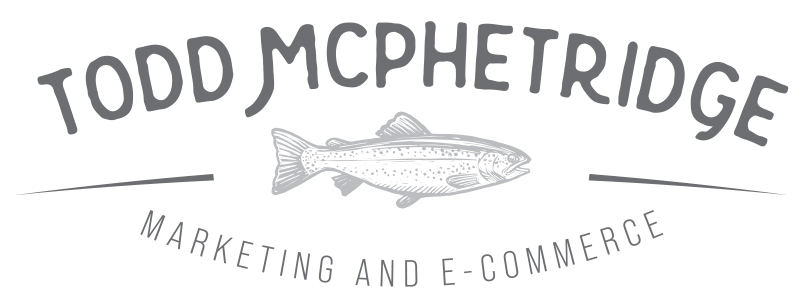Busy founders do not need a long slide deck. They need a fast ecommerce marketing audit that locates waste, fixes obvious blockers, and points budget at what works. This checklist gives you twenty practical checks across media, PDP, lifecycle, analytics, and performance. Each item has a simple scoring system so you can total the opportunity and decide where to act first. Treat it as a one-week sprint that pays for itself.
How the scoring works
For each check, score 0, 1, or 2 and multiply by the weight shown.
- 0 = Not in place or badly broken
- 1 = Partially in place
- 2 = Fully in place and monitored
Weights reflect typical impact on revenue, margin, or data quality. A quick total gives you an honest snapshot of where money is leaking. This is a compact conversion audit you can run every quarter.
| Score Range | Readout | Action |
|---|---|---|
| 0–20 | High impact issues everywhere | Fix data and PDP basics first, then media waste |
| 21–35 | Solid base with costly gaps | Prioritize top weighted failures and quick revenue wins |
| 36–40 | Efficient foundation | Scale tests and expand lifecycle depth |
Section A: Paid Media Efficiency (8 points)
This part of the DTC growth audit locates wasted impressions and protects acquisition costs.
-
A1. Prospecting vs remarketing split published (Weight 1)
Evidence: weekly target range and actuals. Prospecting not starved when costs rise.
Score × 1 = _____ -
A2. Frequency guardrails enforced on warm audiences (Weight 1)
Evidence: cap per 7 days, tail monitor above cap.
Score × 1 = _____ -
A3. Audience hygiene and suppression rules (Weight 1)
Evidence: purchasers excluded, CRM-engaged suppressed during sends, cross-platform dedupe.
Score × 1 = _____ -
A4. Creative pillars with active testing lane (Weight 1)
Evidence: 3–4 pillars, hooks mapped to landing intent, two-week refresh cadence.
Score × 1 = _____ -
A5. Landing intent routing (Weight 1)
Evidence: prospecting to comparison or guide; remarketing to PDP with objections handled.
Score × 1 = _____ -
A6. Contribution-aware promotion rules (Weight 1)
Evidence: promo exposure cap and contribution floor per category.
Score × 1 = _____ -
A7. Catalog feed hygiene (Weight 1)
Evidence: in-stock, margin-safe SKUs prioritized; low inventory hidden.
Score × 1 = _____ -
A8. Channel budget memo (Weight 1)
Evidence: weekly one-paragraph decision log with spend changes and rationale.
Score × 1 = _____
Section B: PDP Conversion and Offer Architecture (10 points)
Small on-page fixes lift conversion and average order value without codes.
-
B1. Price justification near the CTA (Weight 2)
Elements: materials and origin, durability claim with context, cost-per-use, care or warranty, outcome statement.
Score × 2 = _____ -
B2. Trust stack above the fold (Weight 1)
Elements: delivery window, returns summary, review count, guarantee, secure payment icons that are real.
Score × 1 = _____ -
B3. Variant guidance and defaults (Weight 1)
Evidence: sensible default, fit or size helper inline, clear labels and swatches.
Score × 1 = _____ -
B4. Job-based bundle tile visible on PDP (Weight 2)
Evidence: bundle named by use case, 3–4 components, contribution safe, math shown without sounding like a sale.
Score × 2 = _____ -
B5. Checkout add-on with outcome copy (Weight 2)
Evidence: one or two high-utility add-ons, one click acceptance, copy states result such as “Add for easier cleaning.”
Score × 2 = _____ -
B6. Mobile performance and clarity (Weight 1)
Evidence: sticky CTA, quick media load, no intrusive modals on entry.
Score × 1 = _____ -
B7. Review module with filters and media-first (Weight 1)
Evidence: filter by use case, size, rating; photo and video reviews surfaced.
Score × 1 = _____
Section C: Lifecycle and Retention (6 points)
Owned channels turn first orders into cohorts that pay back faster.
-
C1. Opt-in capture and offer integrity (Weight 1)
Evidence: clear value for email and SMS, incentive not deeper than acquisition rules.
Score × 1 = _____ -
C2. Welcome flow that frames value, not urgency (Weight 1)
Evidence: price justification, bundle education, setup guidance.
Score × 1 = _____ -
C3. Browse and cart flows with outcome snippets (Weight 1)
Evidence: delivery clarity, review highlights, link to comparison or sizing help.
Score × 1 = _____ -
C4. Post-purchase success package (Weight 1)
Evidence: quick-start, care tips, relevant add-on or refill after purchase.
Score × 1 = _____ -
C5. Winback logic based on behavior (Weight 1)
Evidence: time since order and product lifecycle drive messaging; discounts used sparingly.
Score × 1 = _____ -
C6. Owned channel coordination with paid (Weight 1)
Evidence: suppression lists applied to warm ads during heavy sends.
Score × 1 = _____
Section D: Analytics and Decision Hygiene (8 points)
Clean labels and stable events keep your ecommerce marketing audit honest.
-
D1. UTM governance locked (Weight 2)
Evidence: lowercase, underscores, enforced picklists, auto-append for email and SMS, first-party storage through checkout.
Score × 2 = _____ -
D2. Purchase event stability and de-duplication (Weight 1)
Evidence: server-side forwarding where supported, event keys to avoid double counting.
Score × 1 = _____ -
D3. Entry intent captured on orders (Weight 1)
Evidence: home, PDP, comparison, or content recorded at session start for cohort reads.
Score × 1 = _____ -
D4. Cohort workbook (Weight 1)
Evidence: CAC, contribution, day 30 and day 60 revenue per customer by first touch channel or campaign family.
Score × 1 = _____ -
D5. Operating scorecard one page (Weight 2)
Evidence: revenue, contribution, blended CAC, payback, prospecting share, promo exposure, entry conversion, and inventory coverage with plain definitions.
Score × 2 = _____ -
D6. Truth table for decisions (Weight 1)
Evidence: which metric wins when platform and analytics disagree; documented and used weekly.
Score × 1 = _____
How to run the audit in one week
This is designed for speed. Block short sessions and ship changes daily.
- Day 1: Access check and data pull. Confirm UTM rules and purchase events. Export orders with basics for cohort setup.
- Day 2: PDP pass for price justification, trust stack, and bundle tile placement. Ship copy and layout updates.
- Day 3: Checkout add-on selection and copy. Implement one click add-on if supported. Start suppression rules across platforms.
- Day 4: Lifecycle passes: welcome, browse, cart, post-purchase. Replace urgency with value and setup help. Align with bundles and add-ons.
- Day 5: Media hygiene: frequency caps, overlap pruning, catalog feed rules, and landing intent routing tests.
Interpreting your score
Add the subtotals and note the lowest scoring items by weight. A quick decision matrix will help you act without debate.
| Category | Your Subtotal | Max | First Move |
|---|---|---|---|
| Paid Media Efficiency | _____ | 8 | Fix frequency and overlap. Route traffic by intent. |
| PDP Conversion and Offers | _____ | 10 | Add price justification, visible bundle tile, and one checkout add-on. |
| Lifecycle and Retention | _____ | 6 | Publish welcome and post-purchase that teach value and care. |
| Analytics and Decision Hygiene | _____ | 8 | Lock UTMs, stabilize events, and ship a one-page scorecard. |
What “good” looks like after the audit
- Conversion rate: improves on hero PDPs due to trust stack and clear price justification.
- AOV: rises from job-based bundles and checkout add-ons with outcome copy.
- CAC stability: better audience hygiene and frequency control reduce waste.
- Payback: shortens as cohorts see fewer discounts and more value-based offers.
- Decision speed: a scorecard and truth table end recurring debates.
Quick fixes that usually pay for themselves
- Move delivery window and returns summary near the PDP CTA.
- Add materials, origin, and a simple cost-per-use line to price justification.
- Place a job-based bundle tile as a peer to the hero SKU, not buried.
- Offer one high-utility checkout add-on with outcome copy and one click acceptance.
- Cap remarketing frequency and suppress engaged CRM segments during sends.
- Auto-append UTMs for email and SMS to end untagged sessions.
- Publish the one-page operating scorecard with clear definitions.
Founder FAQ
How is this different from a full technical audit
This is a compact conversion audit designed to raise revenue quickly. It covers media hygiene, onsite offers, lifecycle messaging, and the analytics you need to make decisions. Save deep refactors for a second phase.
Can this work on a small catalog
Yes. The structure is the same. Price justification and bundle logic often lift smaller stores faster because the offer becomes obvious.
How do we avoid sliding back
Keep the checklist visible and include three items on your monthly review. Add attach rates, promo exposure, and entry intent conversion to your scorecard.
Request the 20-Point Audit
If you want a fast readout that finds money in a week, request the 20-point audit. You will receive a scored checklist, a prioritized change list, and simple artifacts you can keep: price justification copy, bundle tiles, checkout add-on recommendations, lifecycle templates, and a one-page scorecard layout. Todd is an ecommerce consultant that helps businesses grow revenue. Get a quote today.

















